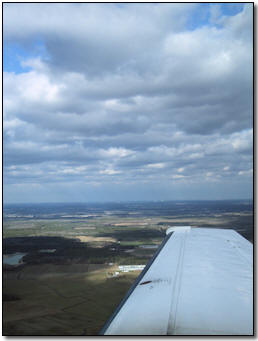Subscriber question:
"When flying VFR through controlled airspace and ATC gives vectoring and altitude instructions that may require entering temporary cloudy conditions, what is the best way to advise ATC or handle the situation?" - Anonymous
John:
 “Let’s review briefly the cloud clearance requirements and reasons for each. For the altitudes most of us fly, it is simple.
“Let’s review briefly the cloud clearance requirements and reasons for each. For the altitudes most of us fly, it is simple.
In general, when in Class E, D or C, you must remain 500 feet below, 2,000 feet laterally or 1,000 feet above any clouds. This is to allow an IFR aircraft popping out of the clouds sufficient time to see and avoid a VFR aircraft.
In Class B airspace, we merely have to remain clear of clouds. Because in a Class B, all traffic (both IFR and VFR) is under positive control of ATC.
None of this allows a VFR pilot to enter a cloud. If an ATC vector or altitude assignment will cause you to enter a cloud, you must promptly advise ATC that you are Unable due to weather and request an alternate clearance.”
